The Kanchenjunga Base Camp Trek is a coveted adventure for those seeking an unparalleled Himalayan experience. Trekkers are drawn to this journey through eastern Nepal, where they’ll encounter the majestic Kanchenjunga range, home to some of the world’s highest peaks. With proper preparation, hikers can enjoy the region’s rich cultural tapestry and diverse wildlife, all while marveling at the stunning landscapes that unfold before them. However, the real challenge lies in the trek’s high-altitude demands, requiring a delicate balance of physical fitness and acclimatization. Those who rise to the occasion will be rewarded with a transformative journey that leaves a lasting impression.
Key Points
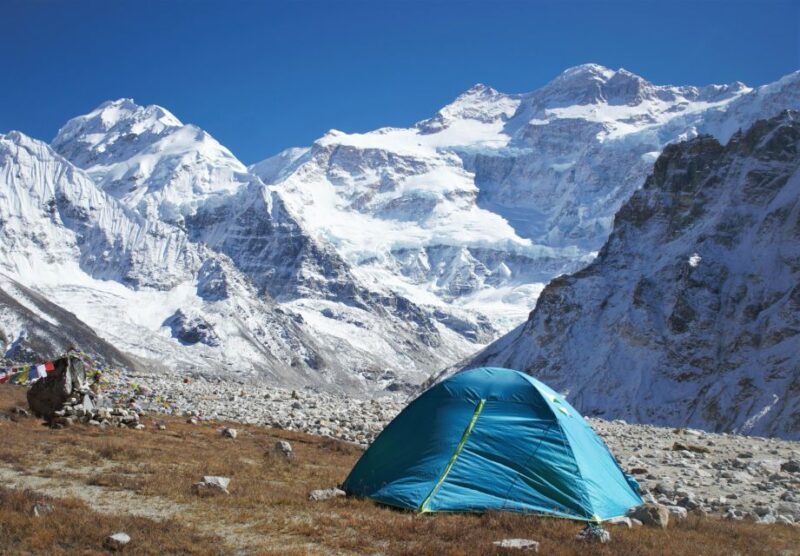
- The Kanchenjunga Base Camp Trek offers stunning views of the Kanchenjunga massif and its seven peaks over 8,000 meters.
- The trek can be completed in 12-18 days, with the option to extend it to 20-25 days.
- Interaction with diverse ethnic groups, including Limbu, Rai, Sherpa, and Brahmin, is a cultural highlight of the trek.
- Proper acclimatization, physical fitness, and adherence to conservation guidelines are essential for a successful and safe trek.
- The trek provides opportunities to spot rare wildlife such as red pandas and snow leopards in the Kanchenjunga Conservation Area.
Trek Overview and Itinerary
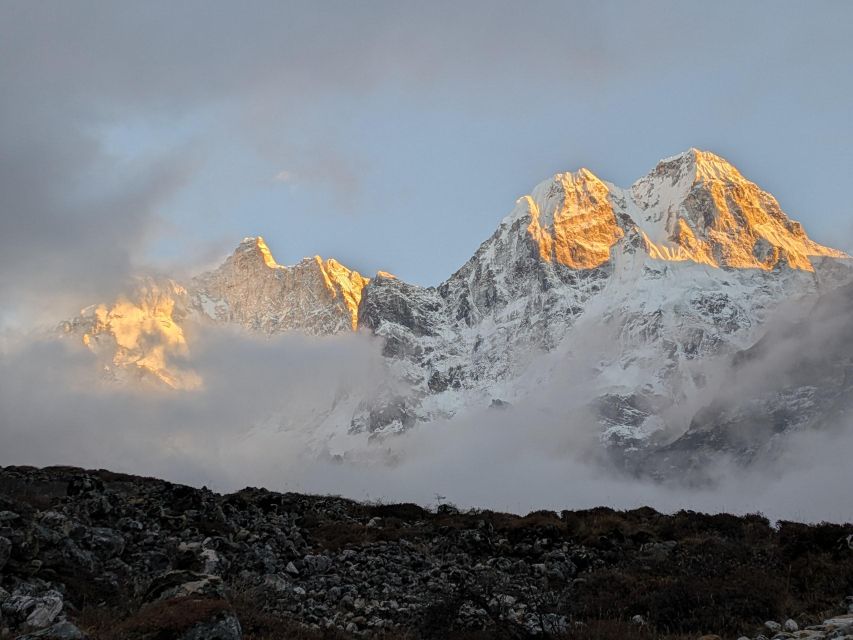
The Kanchenjunga Base Camp Trek is a 12 to 18-day adventure in eastern Nepal, offering trekkers the opportunity to explore both the North and South Base Camps of Mount Kanchenjunga, the third-highest mountain in the world.
Depending on the itinerary and acclimatization needs, the combined trek duration can range from 20 to 25 days. Trekkers can start their journey from either Suketar or Taplejung, with the North Base Camp (Pangpema) offering stunning views of Kanchenjunga’s North Face, and the South Base Camp (Yalung Base Camp) showcasing scenic alpine meadows and Himalayan peaks.
The best seasons to embark on this trek are spring (April-May) and autumn (October-November).
Ready to hit more trails? More hiking adventures we feature in Ghunsa
Highlights and Experiences
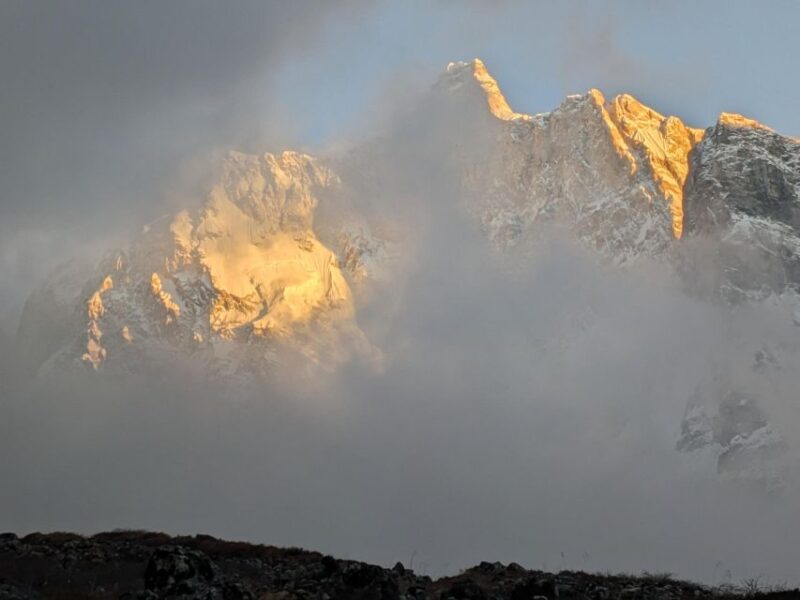
Trekkers can glimpse seven mountains above 8000 meters during the Kanchenjunga Base Camp Trek. This incredible experience allows them to witness the lifestyle of ethnic groups like the Limbu, Rai, Sherpa, and Brahmin. Plus, they’ll explore the vibrant Rhododendron forests of Milke Danda and touch the borders of China and India, seeing the wilderness setting of a full camping trek. Opportunities to spot rare species such as red pandas and snow leopards further enhance this remarkable adventure.
| Highlights | Experiences |
|---|---|
| Glimpse of 7 mountains above 8000m | Explore Rhododendron forests in Milke Danda |
| Experience the lifestyle of ethnic groups | Touch the borders of China and India |
| Full camping trek in wilderness setting | Opportunity to see rare species |
Preparation and Requirements
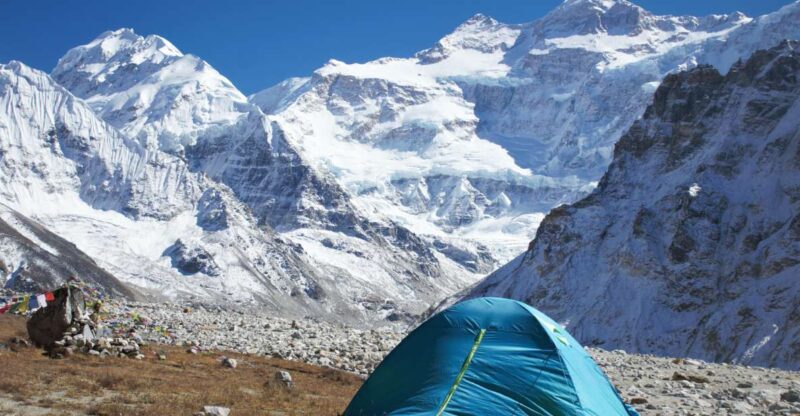
Physical fitness and mental preparedness are essential for the Kanchenjunga Base Camp Trek due to the challenging terrain. Proper acclimatization and trekking with licensed agencies and experienced guides are crucial for a successful and safe journey.
The Kanchenjunga Conservation Area, spanning 2035 km², is home to diverse flora and fauna, making it a protected and regulated environment for trekkers. Trekkers must be prepared for the high altitude, rugged paths, and variable weather conditions.
Obtaining the necessary permits and adhering to the conservation area’s guidelines are mandatory. By prioritizing safety and respecting the delicate ecosystem, trekkers can fully enjoy the breathtaking landscapes and unique cultural experiences the Kanchenjunga region has to offer.
Inclusions and Exclusions
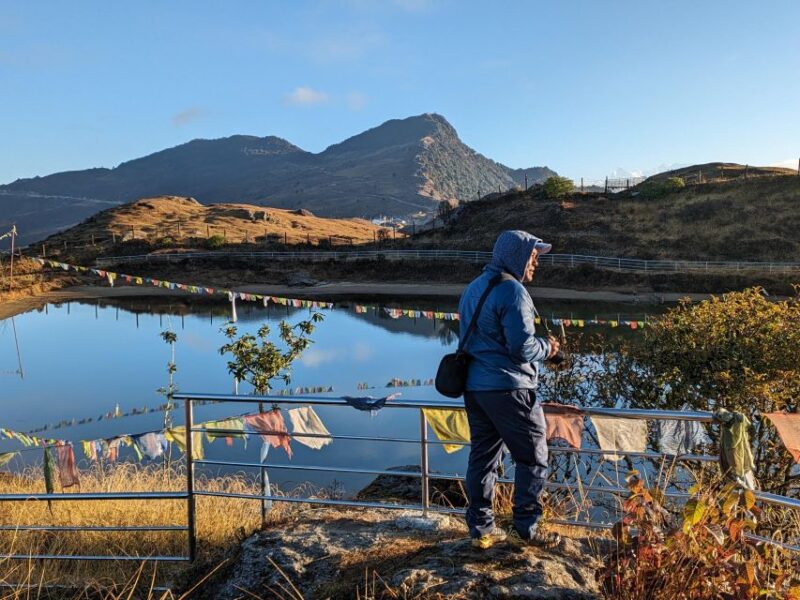
To ensure a seamless trekking experience, the Kanchenjunga Base Camp Trek package includes a range of services and support. This includes airport/hotel pick-up and drop-off, accommodation with breakfast in Kathmandu, and three meals daily during the trek.
Travelers also receive a government-licensed English-speaking guide, one porter per two trekkers, and all necessary trekking permits and conservation fees.
Plus, the package provides sleeping bags and down jackets, as well as domestic flights between Kathmandu and the trek’s starting point.
However, the package excludes personal expenses, Nepal entry visa, tips for guides and porters, and any extra accommodation or meals in Kathmandu.
More Great Thing To Do NearbyBooking and Cancellation Policy
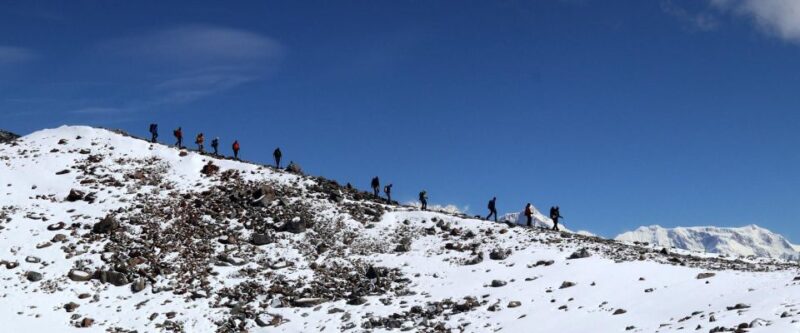
Travelers can save up to 15% on the Kanchenjunga Base Camp Trek, with package prices ranging from $1,625.92 to $1,382.04 per group (up to 2 people). The tour operator offers a free cancellation policy, allowing travelers to cancel up to 24 hours in advance for a full refund. Plus, a reserve now & pay later option is available, and prospective trekkers can check the tour’s availability and starting times. Live tour guides are provided in English, German, and French.
| Pricing | Tour Options | ||
|---|---|---|---|
| $1,625.92 | Group (up to 2) | Save up to 15% | Free Cancellation |
| $1,382.04 | Group (up to 2) | Reserve Now, Pay Later | Available Dates |
Geography and Climate
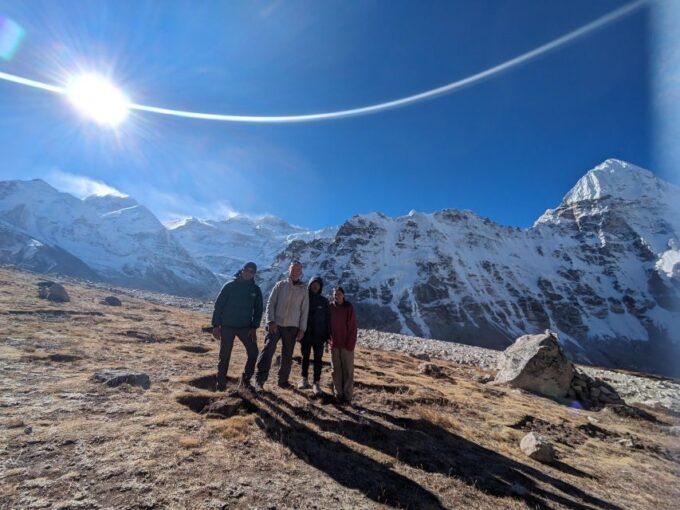
The Kanchenjunga region in eastern Nepal boasts a diverse and remarkable geography, characterized by towering Himalayan peaks, lush valleys, and intricate ecosystems.
Situated along the border with India and China, the area encompasses the world’s third-highest mountain, Mount Kanchenjunga, as well as several other peaks exceeding 8,000 meters in elevation.
The climate in this remote corner of Nepal is typically alpine, with:
- Bitter winters with heavy snowfall
- Short, cool summers
- Unpredictable weather patterns
- High levels of precipitation, especially during the monsoon season
- Rapid changes in temperature and conditions due to the extreme altitude
Navigating this challenging yet captivating terrain requires proper preparation and equipment, making the Kanchenjunga Base Camp Trek a true adventure for the experienced trekker.
Cultural Immersion and Exploration
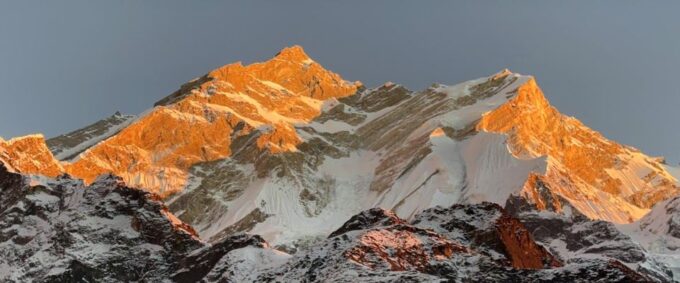
One of the captivating aspects of the Kanchenjunga Base Camp Trek is the opportunity to take in the diverse cultural tapestry of the region, interacting with a mosaic of ethnic groups and experiencing their unique traditions firsthand.
Along the trek, you’ll encounter the Limbu, Rai, Sherpa, and Brahmin communities, each with their own distinct customs, dialects, and ancestral practices.
From observing traditional weaving techniques to participating in community rituals, the cultural exchange offers a profound glimpse into the rich heritage of eastern Nepal.
This immersive experience not only broadens one’s understanding but also fosters a deeper appreciation for the resilience and adaptability of the local people in the face of the rugged Himalayan landscape.
Equipment and Packing List
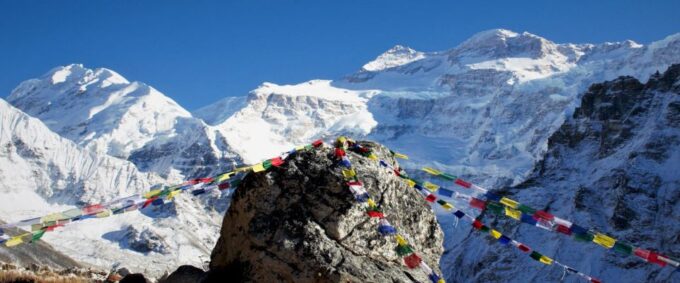
Proper preparation and a well-curated packing list are essential for a successful Kanchenjunga Base Camp Trek, as trekkers must contend with diverse terrains, unpredictable weather, and the need for specialized equipment to ensure their safety and comfort throughout the journey.
Critical items include:
-
Sturdy, waterproof hiking boots with good traction
-
Warm, layered clothing for fluctuating temperatures
-
High-quality sleeping bag and insulating sleeping pad
-
Portable water filtration system and reusable water bottle
-
Headlamp, power bank, and other basic survival gear
Packing thoughtfully and carrying only necessary items will help trekkers navigate the challenges of this epic journey through the Himalayas with ease and confidence.
Frequently Asked Questions
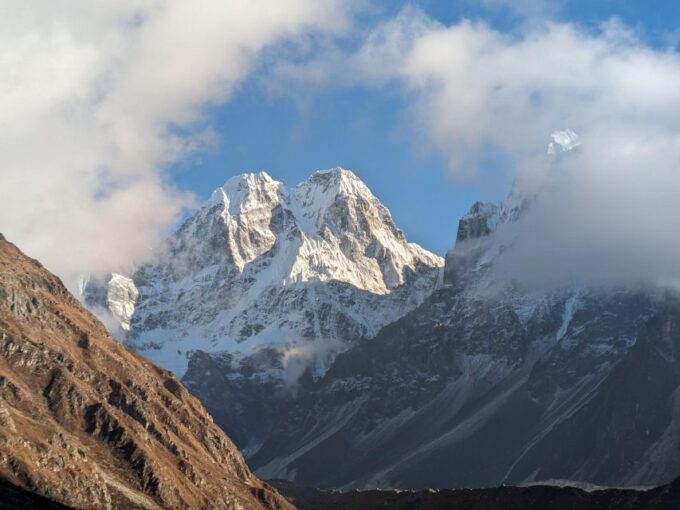
Is the Trek Suitable for Families With Children?
The trek may not be suitable for families with young children due to the challenging terrain and high elevation. However, it could potentially work for older, experienced children accompanied by fit, prepared adults. Safety and acclimatization would be key considerations.
How Difficult Is the Trek Compared to Other Himalayan Treks?
The difficulty of Himalayan treks varies greatly, with the Kanchenjunga Base Camp Trek considered one of the more challenging. It requires exceptional physical fitness, mental fortitude, and proper acclimatization due to the demanding terrain and high altitude.
What Is the Best Way to Train for the Trek?
To train for a challenging Himalayan trek, one should focus on building cardiovascular endurance, muscular strength, and flexibility through a combination of hiking, strength training, and core exercises. Proper acclimatization is also vital to ensure a safe and enjoyable trek.
Are There Any Medical Facilities Along the Trekking Route?
Along trekking routes, there are basic medical facilities like first-aid kits and clinics in major towns. Trekkers should carry essential medications and consult with guides about access to medical care in case of emergencies or health issues during the trek.
Can I Extend or Shorten the Trek Duration?
Yes, the trek duration can be extended or shortened based on one’s fitness level and acclimatization needs. The itinerary is flexible, and trekkers can adjust the number of days as per their preference and physical capabilities.
Recap
The Kanchenjunga Base Camp Trek offers an unparalleled adventure in the heart of the Himalayas.
Trekkers will be rewarded with breathtaking mountain vistas, culture, and the opportunity to challenge themselves physically and mentally.
With proper planning and preparation, this trek provides an unforgettable experience amidst the unspoiled beauty of eastern Nepal’s pristine landscapes.
You can check if your dates are available here: